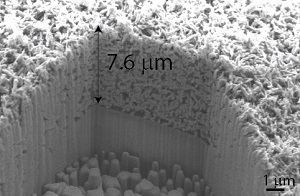Research
Home
News
People
Research
Publications
ICP-MS Lab
Geochemical and Hydrological Processes Lab
Ongoing projects

Integrating CO2 mineralization and mining for the recovery of energy-relevant elements and construction materials from waste
We are working on the integration of mining and CO2 mineralization.
We use mine tailings and brines as source materials, and inspired by nature we are engineering a sustainable approach to mitigate CO2 emissions into the atmosphere, recover critical elements (e.g., Cu, Li, Mn, Ti) for the energy transition, and carbonates for construction materials.
The project is in collaboration with Clarkson University and it is funded by the Carbon Development Initiative at Columbia University and by the Ministry of University and Research through the Excellence Project.

Compound Flood Risk from the Combined Effects of Sea Level Rise on Storm Surge, Tidal and Groundwater Flooding, and Stormwater – The Urban Drainage Component
The interaction between groundwater and sewer network is an emerging issue in coastal urban areas. It is due to sea level rise (SLR), more frequent and intense precipitation events, and the aging of the networks in the country.
The interaction between groundwater and sewer network occurs through processes called infiltration and exfiltration. Infiltration is due to groundwater entering sewer pipes through cracks or disconnected joints. It reduces the capacity of the sewer network while increasing the flow within the pipes triggering overflows. Exfiltration is due to the leakage of untreated wastewater at damaged locations of the sewer network contaminating the subsurface.
In this project, we will develop an urban drainage model of selected low-lying urban areas in Long Island which are densely populated and have aging infrastructure. The model will be tightly coupled with the groundwater model of the selected areas for real time predictions. We will also investigate the role of drainage networks in compound flood modeling and determine the probability of groundwater-sewer interaction within the next 50-100 years.
The project is funded by the United State Geological Survey (USGS).

Transport of pathogens in unsaturated porous media
Untreated or partially treated wastewater may contain excessive concentration of pathogens that can enter water bodies and pose risk to human health. It is important to understand the fate of pathogens in soil to formulate best practices of wastewater reuse in agricultural fields.
In this project, we are developing and implementing a transport model coupled with bio-geochemistry to predict the transport of pathogens in unsaturated soils under variable conditions.
The project is a collaborative effort involving several researchers throughout Italy, including the University of Pisa, the University of Bari, the University of Catania, as well as CNR-IRSA in Bari.
The project is funded by the Ministry of University and Research.

Co-transport of nano-plastics and dissolved contaminants in soil and water
Recent studies have shown that nanoplastic particles (NPs) can travel without retardation in soil and water and accumulate other contaminants onto their surface and within their porous structure such as: heavy metals, persistent organic molecules, and pharmaceutical behaving as contamination vectors around the planet.
In this project, experiments and modeling activities are carried out to create a model of NPs transport coupled with bio-geochemistry to understand co-transport of NPs in reactive porous media. Laboratory experiments using microfluidic and column-flood systems are performed on selected types of NP materials and under well-controlled laboratory conditions resembling natural aquatic environment.
The project is funded by the University of Padua.





